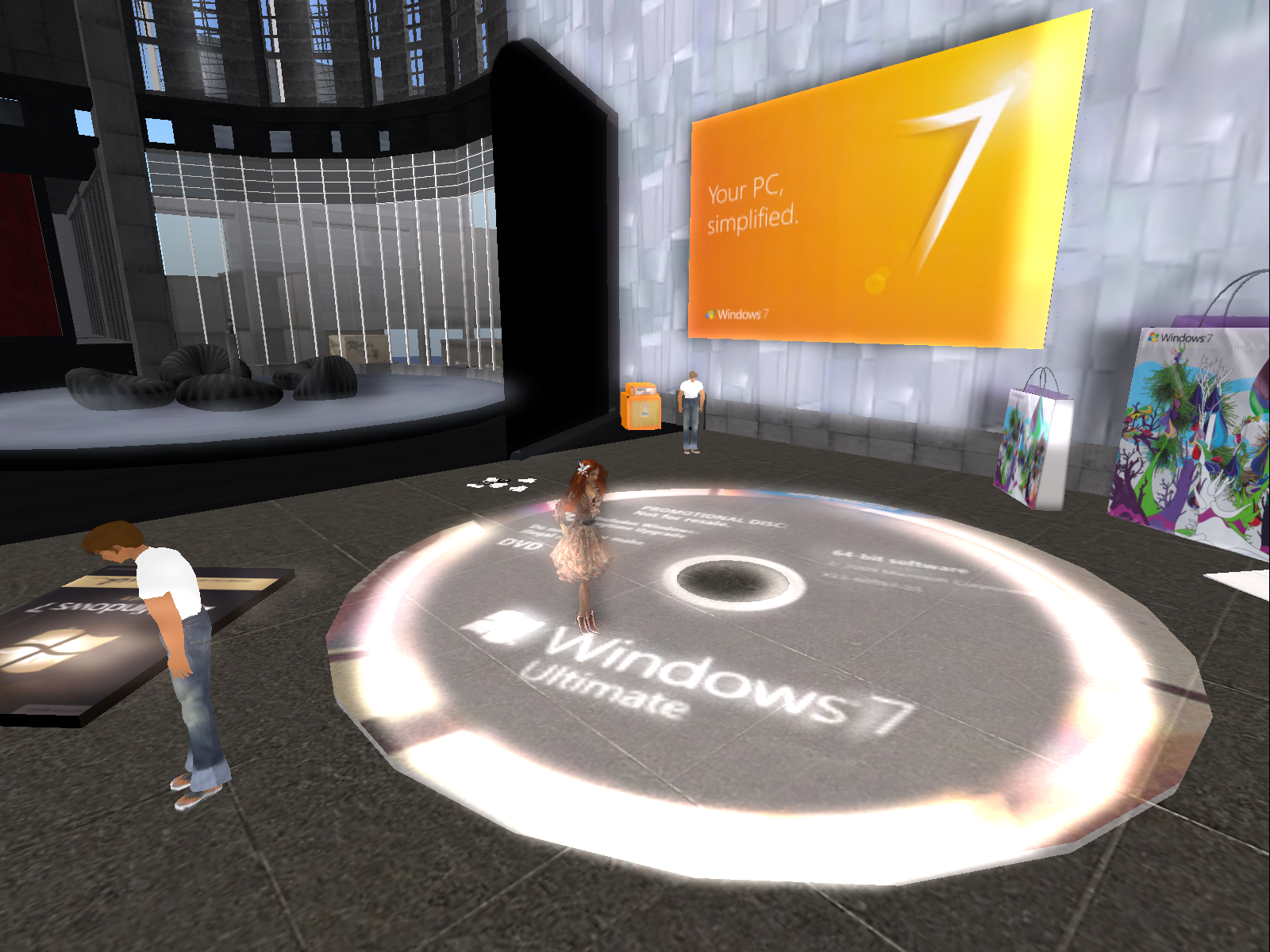Why Microsoft might be interested in Linden Lab and Second Life
Microsoft is not exactly a “newbie” corporation in terms of understanding the importance of something like Second Life: they have been around SL for a few years. They used to have a permanent presence, and did some developer conferences in SL; these days, they have moved to OpenSim (namely ReactionGrid) and have done some great job integrating Live ID logging in to the SL Viewer, but a few Microsoft-sponsored groups still remain in Second Life and meet there or do product releases. Compared to all the other companies doing some work in SL-compatible virtual worlds, and although IBM and Intel lead the development and interest, Microsoft is not exactly crossing their arms and waiting. So, a good, strong point in favour is that they know about SL, they know about LL, and they’re not strangers to virtual worlds, but active developers.
A few journalists think that Microsoft might be looking to launch their own equivalent of Sony Home for the XBox. With the upcoming Natal controller-free interface, it’s plausible to imagine that having a generic social virtual world for the XBox. Imagine that the building tools would simply be gestures to “grab” prims in the air, resize them, move them around…! Second Life has a lot of possibilities to become a technology for Microsoft to “show off” some incredible things.
While Microsoft might not always have bought the best companies out there, they aren’t too bad, either — things like Office or Navision come to mind as having been rather good acquisitions; I think that in both cases the companies behind them were profitable, or at least, close to that. MS’s Office division is definitely still very profitable! So Microsoft might be looking for a profitable company for a change, and caring little about the media hype.
A few things come to mind… Linden Lab sort of started avoiding IBM and Intel, with whom they were co-developing the intergrid teleporting protocols. This was a bit baffling, since immediately afterwards, IBM and Intel increased their work on OpenSim even more. The “romance” with Microsoft might explain why LL dropped interop and estranged IBM and Intel.
Microsoft could also have influenced LL’s decision of merging the two grids: after all, their games division targets content for the teen market. The bad news is that all adult content might have to go…
LL also announced the end of Avatars United. This would naturally make sense if Microsoft was thinking of buying LL. Microsoft already has Live, and shares in Friendster… and, of course, in Facebook, which would explain why LL was so eager to develop closer integration with Facebook.
With Zune, Microsoft has shown they’re also interested in sales of digital content. Second Life is, for all purposes, the largest marketplace for virtual goods in existence, in terms of number of available products (270 terabytes of items is the number quoted by LL a year or so ago) and overall sales, being worthUS$ 0.6 billion annually. Microsoft may think they could leverage the SL Marketplace to their advantage and announce themselves as being bigger than their “new old rival” Apple — something that Linden Lab keeps forgetting to announce: the overall SL economy sells more than Apple’s iTunes & App Stores…
And imagine that Microsoft would persuade LL to get rid of their Google Appliance Server… and replace it with Bing instead. Also, Microsoft has their own ad technology (the one that used to power Facebook ads!) so this might replace in-world classifieds.
An interesting possibility would be relaunching Second Life as an enterprise product, using Microsoft’s world-wide sales network to reach a far wider market than Linden Lab ever managed to get. LL’s enterprise division could thus be revived from the dust and given a second chance.
And of course they might use Second Life to show off their Azure cloud platform (replacing what Linden Lab has been doing with Amazon’s own service to push textures and assets via HTTP).
Finally, this would also explain why M Linden had kicked out so many employees, namely, developers… Microsoft has plenty of programmers! A leaner LL would be more interesting for Microsoft to buy, and of course, they could bring most of the viewer code to their internal teams to develop further.
So these are good, valid arguments for the rumour to be true…






